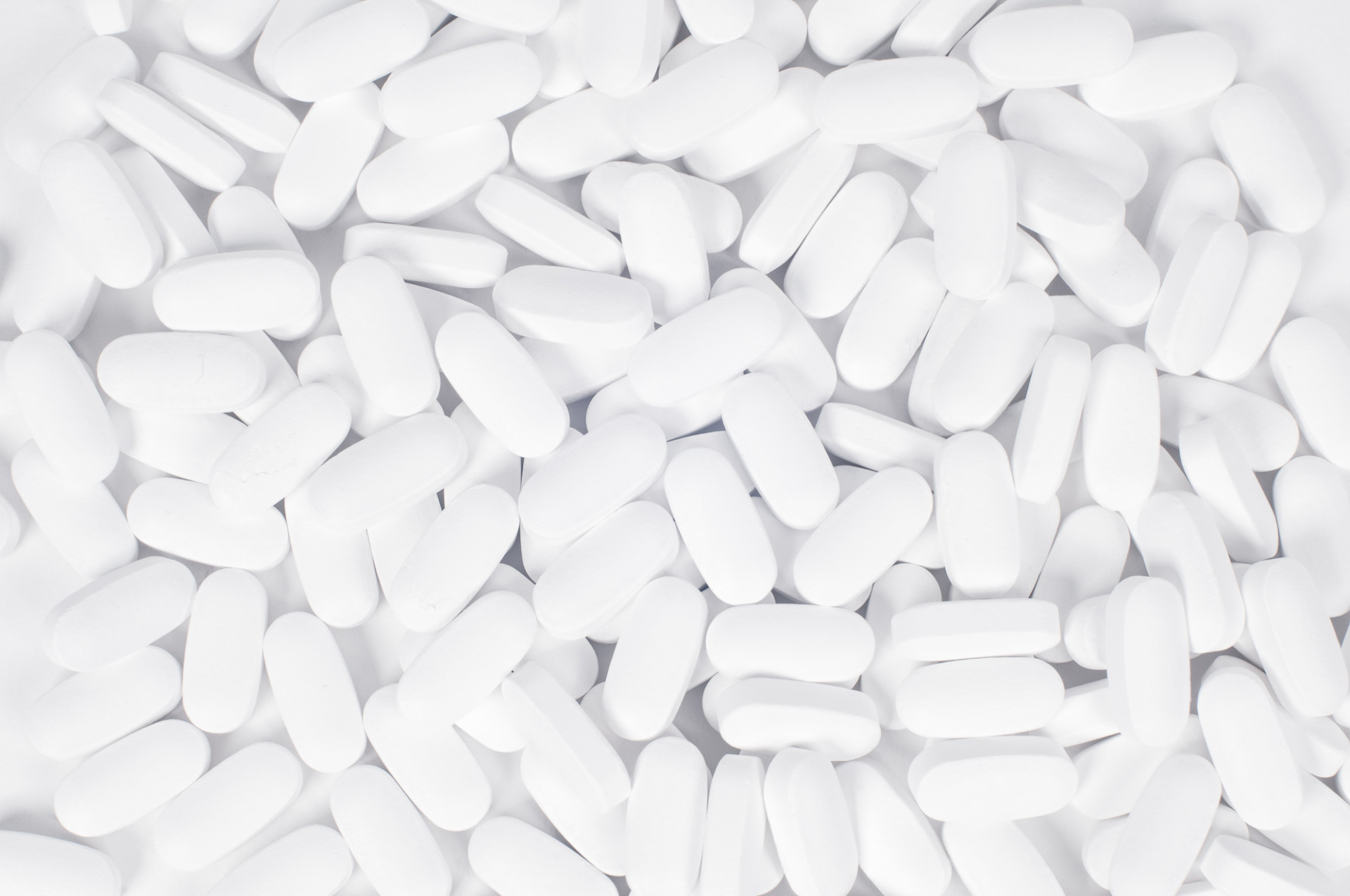Are you interested in taking tianeptine sulfate? Well, if that’s the case, you must be aware of the correct tianeptine sulfate dosage to take.
Tianeptine on its own is not dangerous, but in high-dosages and in combination with other substances can prove to be an unnecessary inconvenience.
In this article, we will cover what tianeptine is, the difference between sodium and salts, method of action, tolerance and addiction potential, and how to dose.
So keep reading to find out everything you might want to know.
What Is Tianeptine?
Stablon/Coaxil, also known as Tianeptine is a pharmaceutical-grade compound that is often used for the treatment of clinical depression. It is also sometimes used to help mitigate the symptoms of asthma and irritable bowel syndrome.
At large doses, tianeptine is known to produce opioid-like recreational effects, such as stimulation and sedation, motivation, and euphoria. In terms of classification, tianeptine is a tricyclic antidepressant.
However, it’s effects and pharmacology vary from a traditional anxiolytic and antidepressant. Primarily in the fact that it does not act immediately through regulation of monoaminergic neurotransmitters, such as noradrenaline, dopamine, and serotonin. But rather acts upon glutamatergic and glutamate mechanisms, causing the brain to adapt to depression and stress.
In a clinical setting, it is suggested that tianeptine is just as effective as typical antidepressants, such as amitryptiline and fluoxetine. In addition to that, it seems to exhibit fewer side effects and associated complications.
Not to mention, tianeptine has a strong anxiolytic profile, showing lots of promise in treating panic disorders. Tianeptine also has some effect on cognition and neuroprotective properties of the brain. Considering all of the above, tianeptine is a popular nootropic.
The Difference Between Tianeptine Sodium & Salts
Much like any other drug, tianeptine can be developed into various salt forms to help with bioavailability, effectiveness, and overall absorption. Tianeptine is most often found in the sodium salt form because that is the version that is sold by pharmacies and even prescribed by doctors.
However, tianeptine sulfate is now also marketed on various nootropic sites, proposing that it is superior to sodium salt. In practice, there is no practical research that proves improved efficacy of the sulfate form, but some anecdotal reviews suggest otherwise, proposing a longer duration and stronger effect.
The sulfate form is not significantly more potent, but it is certainly metabolized at a slower rate, meaning the dose will be more effective throughout the day. Anecdotal reports also mention that the slow stabilization contributes to a lower addiction profile.
The sulfate form is bound to provide a more balanced experience, as opposed to the sodium salt, which peaks in the antidepressant effects and then rebounds to baseline almost instantly.
To learn more about tianeptine sulfate, view here.
Method of Action & Pharmacology
Unlike many of the prescribed antidepressants, tianeptine has practically negligible interaction with the monoamines, such as serotonin and dopamine. It does increase the extracellular levels of dopamine, but the exact method of action for this process is unknown.
In rat studies, it has been noted that tianeptine does not increase serotonin levels. Rather, it has been noted that it increased the reuptake of the neurotransmitter, which is interesting considering that most antidepressants are reuptake inhibitors. Nonetheless, the alteration of serotonin via tianeptine is most likely not relevant to pharmacology.
Tianeptine also plays a large part in brain neuroplasticity via the modulation of glutamate and its associated receptors, primarily via the regulation of NMDA receptacles.
Changes in neuroplasticity are directly linked to a reduction in depressive and stress-induced symptoms. Most recent studies show that tianeptine is also capable as a μ-opioid receptor agonist, which probably contributes to the anxiolytic properties.
Addiction & Tolerance
It is known that chronic use of tianeptine is mildly addictive, and can cause both psychological and physical dependence. When physical dependence has been developed, withdrawal symptoms are bound to occur if the person stops his usage.
Tolerance to the variety of effects will develop over prolonged periods of usage, including the therapeutic effects as well. This contributes to users having to take larger dosages to achieve the same effects as before.
It takes about three to seven days for the tolerance to halve, while it takes 2 weeks to return to baseline. The compound might also have cross-tolerance with other types of tricyclic antidepressants.
Because of the traditional tianeptine’s short-lasting duration of effects, it might insist on compelling people to re-dose. The euphoric effects of high dosages might cause some to exceed the recommended amounts, which will quickly contribute to tolerance and intensify the side effects.
As mentioned earlier, because of the properties as a μ-opioid receptor agonist, tianeptine might have the same addiction withdrawal tendencies as a typical opiate. In any case, like any person looking to discontinue antidepressant medication, daily users of tianeptine have to slowly taper their dosages instead of abruptly stopping. This will make sure that discontinuation side effects are kept to a bare minimum.
Tianeptine withdrawal is not pleasant, and it can occur at dosages as little as 500 mg per day. However, the severity will increase with the length of usage and quantity. Symptoms are watery eyes, flu-like, dry heaves, breath instability, emotional disturbance. Some believe that tianeptine withdrawal is worse than a typical opioid.
How to Take Tianeptine Sulfate Dosage Responsibly
First things first, tianeptine should only be administered orally. Sublingual tianeptine administration should be avoided at all cost because the sodium salt can peel skin in your mouth. Whereas, sulfate salt can incur tongue infection to develop. Tianeptine has a disturbed acid profile, which contributes to yeast growth in both cases.
Snorting or smoking tianeptine, whether it’s in the sulfate or sodium form is something you should never think of doing. Abuse is real and strongly discouraged.
If you’re wondering about taking tianeptine with or without food, then you should take it 20 minutes before you have your meal to ensure that digestion has begun.
Also, do not take more than 300 mg over the course of a day, and no more than 100 mg at once.
For the tianeptine sulfate dosage, it will vary from person to person. But typically 40 mg is more than enough to experience the effects. Because of the long onset, sulfate is primarily used in therapeutic circumstances. Doctors might prescribe it for long-term depression treatments.
For tianeptine sodium, the dosage is anywhere from 15 to 100 mg. 15 is the standard mg quantity that someone needs to take in order to feel any effects. It’s important to mention that for tianeptine sodium, a dosage of 100 mg would produce opioid-like effects.
In patients with depression who also have bipolar symptoms, tianeptine will worsen the outcomes of depression-mitigation. Tianeptine in pregnant women will cause neonatal abstinence syndrome. Tianeptine can contribute to binge-drinking in adolescents and the reverse in adults.
Tianeptine Legal Status
Another thing to consider is the legal status of tianeptine. Tianeptine is primarily available by prescription in various South American, Asian, and European countries. It can be found under the brand name of Coaxil or Stablon.
In Canada, tianeptine is uncontrolled, thus you can possess it without prescription or license. In Germany, tianeptine is a prescription medicine. In Russian, tianeptine is a Schedule III controlled substance. In Switzerland, tianeptine is not controlled, thus legal depending on circumstance.
In the UK, tianeptine is illegal to import, supply, or produce under the Psychoactive Substance Act. In the US, tianeptine is an uncontrolled substance. However, many vendors choose not to provide it due to the abuse potential and recreational use.
In Michigan, it is a Schedule II controlled substance, the first and only state to schedule the drug.
Wherever you are, it’s best to consult with the government website to ensure that you are not breaking the law, because if tianeptine is federally controlled, the charges and consequences will be severe.
Tianeptine for You
Now you know about the tianeptine, the difference between salt forms, pharmacology, addiction profile, and safety for tianeptine sulfate dosage & sodium.
You are well on your way to deciding for yourself whether or not it’s something you would like to try. Tianeptine is unscheduled in several countries, meaning it is not regulated by law and you can have it on you at all times in any quantity. This means that you can easily self-administer the substance after learning about it.
However, considering the abuse potential, you should always ask yourself if you trust yourself to regulate your dosages.
If you’re interested in learning more about supplements and pharmaceuticals for general well being, go through our categorical filters at the top of the page.




